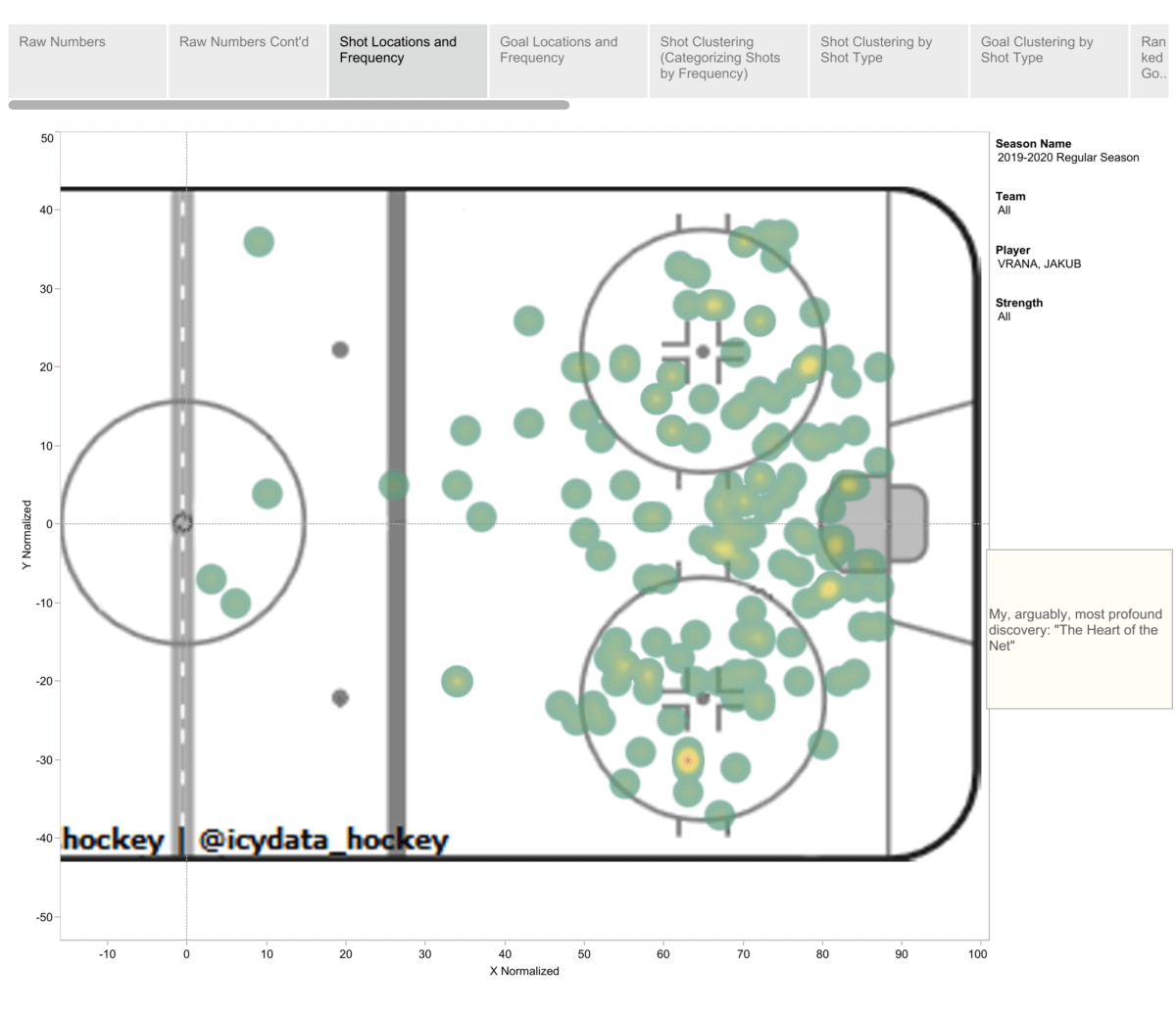The Washington Capitals have recently completed their round-robin tournament and are now gearing up for what is hopefully a nice, long playoff run. In order for it to be long, they will need contributions from everybody. That includes their top guys, like Alex Ovechkin and Evgeny Kuznetsov, and also their bottom-six players, like Garnet Hathaway and Richard Panik. However, the team also needs contributions from those guys in the middle of the lineup. One of those players is Jakub Vrana, who could be an “x” factor for the Capitals this postseason.

Vrana enjoyed a breakout season for the Capitals in which he scored career highs in every stat. This season, he scored 52 points in 69 games, which was good enough for fourth on the team and also had him on pace for 61 points over an 82-game season. 25 of his 52 regular-season points were goals. Most impressively, 24 of those goals came at even strength, which tied him for seventh-most in the NHL with Jack Eichel and Max Pacioretty.
Related: Jakub Vrana Continues to Shine
Needless to say, the Capitals are getting every penny of their money’s worth with Vrana, as he signed a contract extension for two years worth $6.7 million with a $3.35 million annual average value (AAV) back on July 16, 2019.
For some reason, though, Vrana hasn’t shown that he’s necessarily a playoff performer. In his 30 games of playoff hockey, he has 8 points. These 8 points all came during the 2018 Stanley Cup run when he played 23 games. Granted, he was just a rookie and some of those 8 points were pretty impactful.
Although these two were clutch goals at important moments, it is Vrana’s playoff consistency that needs to be proven.
The Consistency
In Washington’s first-round series against the Carolina Hurricanes in 2019, Vrana was pointless in seven games. He was a 20-plus goal scorer that season, so going through the playoffs with zero points is concerning. He did say he was nursing an injury, however, he refused to specify how serious it was. So far in this postseason, the Czech Republic-native was held off the scoresheet in the three round-robin games.
It is a little hard to be mad at him because most of Washington’s offense was invisible as everyone returned from a five-month hiatus due to COVID-19. However, in those three games, their effort could best be described as lackluster at times. Something that eases the pain of their mediocre play is that the guys who didn’t perform well in the round-robin are proven playoff players. Ovechkin, Kuznetsov, Nicklas Backstrom and T.J. Oshie. All of these guys have proven to the Capitals and their fans that when the games matter, they can take it to that next level.
We have seen flashes of this with Vrana, like in the two videos above, but not on a consistent-enough basis to know that he will turn it on when the puck drops for Game 1 of the first round.
He has only had a small sample size of playoff hockey, but now he has an opportunity in front of him. This postseason is Vrana’s chance to add himself to that list of players who show up in the playoffs and can take their game to a different level when they need to. He could be a very valuable piece to the Capitals if he is playing at the top of his game.
The Speed
Vrana has a few gifts that make him a very special player for the Capitals. One of these is his speed. He is arguably the fastest player on the Capitals, with his only competition being Carl Hagelin. Much like Hagelin, he can chase down loose pucks (and usually win the race), negate icings, and can either blow around or through opposing defenders.

Head coach Todd Reirden knows how valuable Vrana’s speed is. In an interview with Adam Zielonka, Reirden said, “‘Everyone can have an effect [in] a different way, and Vrana’s is definitely with his speed and his instincts to pick passes off,'” (Jakub Vrana’s speed, work ethic give Capitals a blossoming young star, The Washington Post, January 9, 2019).
Speed can kill teams when used effectively and when used as part of a greater overall system as opposed to one player trying to dictate the play with their speed alone (unless you are Connor McDavid who can absolutely do that).
Vrana appears to be one of those speedy players who knows how to use his speed to his and his team’s advantage, as in the same Washington Post article, he said of his own speed, “‘You cannot always go so fast. You have to read the situation,’ Vrana said. ‘Obviously I try to use it as much as I can and when I see the chance to skate I do it. I think I’m a good skater and I just try to use it as much as I can.'”
The Shot
Another one of Vrana’s gifts that makes him a potential “x” factor in the playoffs is his shot. His shot is up there with those of John Carlson and Ovechkin. The thing about the latter’s shot, though, is how quickly he can get it off and how he can shoot it while in motion.
Related: Top 5 Longest NHL Games in the Post-Expansion Era
Look, few people love Ovechkin more than me, but he takes a lot of his shots while standing still. It’s not like it isn’t working for him, but it is nice to have a player who can shoot off-the-rush the way Vrana can. His release is so quick that it is unsuspecting to goalies and can be lethal at times, but perhaps what is most impressive is how he shoots it while in stride. A perfect example is this goal from 2018 against the Winnipeg Jets.
Having a player who can shoot like this is a huge advantage in the postseason, and fortunately for the Capitals, Vrana is a player who shoots the puck quite frequently.
How Often He Shoots
This season, Vrana took 187 shots, which was good enough for 42nd-most in the NHL. He had a S/60 (shots per 60 minutes of ice time) of 10.93, which was good enough for 21st in the league for players who played over 20 games. That number doesn’t decrease much at even strength, as he had a 10.51 S/60, which was good for 13th in the league for players who played over 20 games, and ahead of names like Auston Matthews and Patrick Kane. Of the players ahead of Vrana in even-strength S/60, he has the third-most goals behind only Ovechkin and David Pastrnak.
In the round-robin, the Capitals were averaging 25 shots-per-game. Putting pucks on net is something that will be necessary to having success against the New York Islanders, a team that clogs the middle and allows few lanes. Those numbers will need to improve, so it helps that Vrana likes to shoot the puck
Something else that will help is the fact that Vrana will shoot from just about anywhere, which, again, will help the Capitals in penetrating the Islanders’ defense.

Just look at the Toronto Maple Leafs and Columbus Blue Jackets. The Leafs did not shoot enough and did not get to the front of the net enough, and because of that, they lost to a team that is less skilled than them. They had 39 shots in the only game they won in the series without a miraculous comeback.
If Vrana can take the next step that I believe he can take in the postseason, those shots of his will become one of his most valuable assets during the second season.
I will be the first to admit that I am not the most knowledgeable in analytics, but something of note is that Vrana’s Corsi rating at even strength this season was 51% at even strength. Even I can tell you that that is a good thing because it means that the Capitals control the puck more than they don’t when Vrana is on the ice, which will be vital against a well-structured Islanders team.
Utilizing His Assets
Vrana has a lot about him that makes him a spectacular player and he will need to use all of that to have a breakout postseason to go along with his breakout regular season. He is a player of tremendous value to this Capitals team, and that can increase if he proves to be a playoff player as well. All of his tools — the speed, the smarts, the shot — they all are keys that can help crack a defensive team in the playoffs.
The time is now for him to decide if he wants to take that next step when the pressure rises or if he would rather burst his team’s bubble *wink at the camera*.